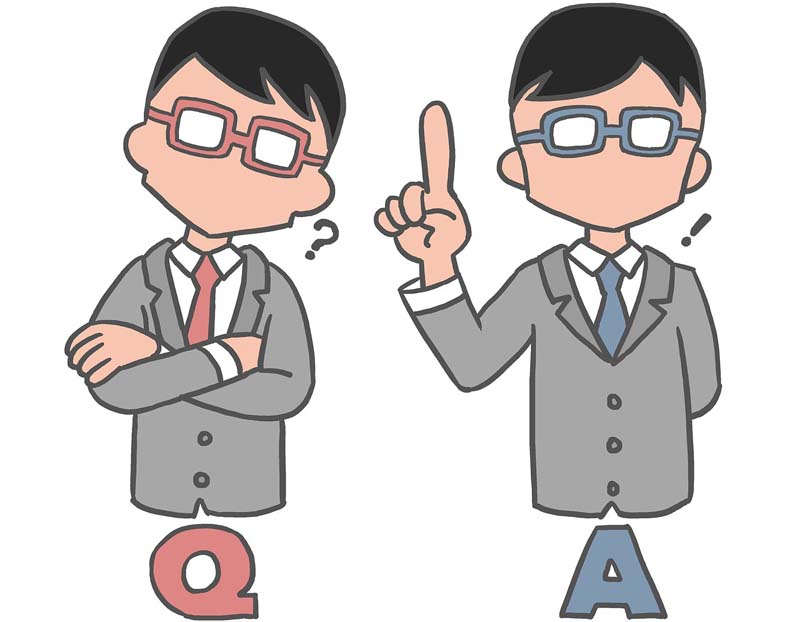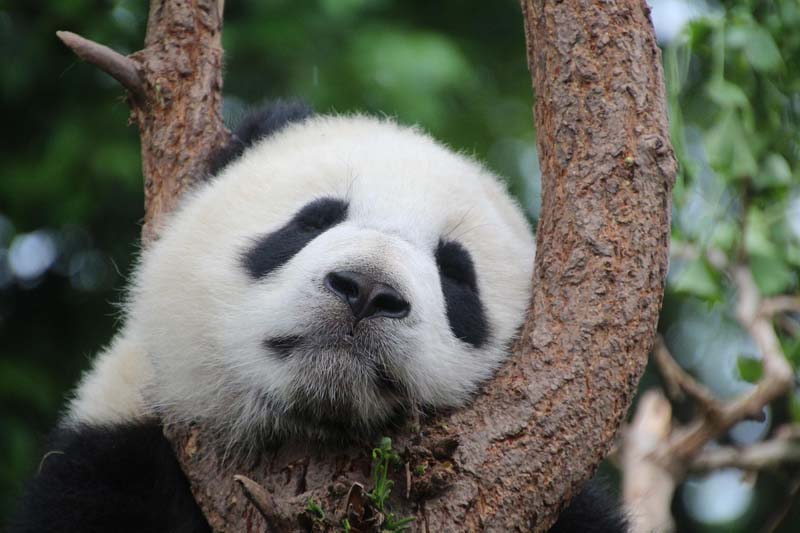- 1. Brief introduction–Mandarin
- 2. Recognizing Chinese between traditional characters and simplified characters
- 3. Recognizing Chinese among various dialects
- 4. Brief introduction–Japanese (Hiragana and Katakana)
- 5. What are the differences between Japanese and Chinese
- 6. Similarities between Chinese and Japanese
- 7. The origin of Chinese and Japanese
- 8. Summary
1. Brief introduction–Mandarin
Mandarin, also known as Standard Chinese, is the official standard language of China and one of the official languages of the People’s Republic of China. It is based on the northern Chinese dialects and underwent standardization in the 1950s to facilitate communication across the country. Mandarin is a major language in mainland China, Taiwan, Singapore, and Malaysia.
The phonetic system used for Mandarin is called Hanyu Pinyin, which employs the Latin alphabet to spell out the sounds of Chinese characters. This system is widely used for educational purposes and to annotate pronunciation. Simplified Chinese characters are the standard writing system for Mandarin, differing from traditional characters, and are used in many Chinese communities and international Chinese studies.
2. Recognizing Chinese between traditional characters and simplified characters
Traditional Chinese characters and simplified Chinese characters are two forms of written Chinese, each with distinct characteristics:
① Traditional Chinese Characters:
These characters are the original and more complex form of Chinese characters.
They are used in regions such as Taiwan, Hong Kong, and Macau.
Traditional characters have more strokes and are often considered more intricate and artistic.
② Simplified Chinese Characters:
These characters were introduced in the mid-20th century in mainland China to increase literacy rates.
They are simpler, with fewer strokes, making them easier to write and learn.
Simplified characters are the standard in mainland China, Singapore, and Malaysia.
For example, the character for “love” in traditional Chinese is “愛,” whereas in simplified Chinese, it is written as “爱.” The choice between traditional and simplified characters often depends on regional conventions, historical factors, and personal preferences.
3. Recognizing Chinese among various dialects
Chinese is a language with numerous dialects, and while Mandarin is the official standard, there are several major dialect groups. Here are a few key ones:
①Mandarin (Putonghua):
Standard Chinese and the official language of China.
Spoken in northern and southwestern China.
Includes various subdialects.
②Cantonese:
Spoken in Guangdong, Hong Kong, and Macau.
Has distinct tones and vocabulary compared to Mandarin.
Widely spoken among overseas Chinese communities.
③Shanghainese:
Spoken in the Shanghai region.
It is a Wu dialect and differs significantly from Mandarin.
④Hokkien (Min Nan):
Spoken in Fujian province, Taiwan, and among overseas Chinese communities.
One of the Min Chinese dialects.
⑤Hakka:
Spoken in various parts of China, Taiwan, and communities worldwide.
Known for its unique phonetics and vocabulary.
⑥ Teochew (Chaozhou):
Spoken in the eastern Guangdong province.
It is a variant of Min Nan Chinese.
⑦Hunanese (Xiang):
Spoken in Hunan province.
It has several subdialects.
⑧HmongMien languages:
Spoken by ethnic minorities in southern China.
It’s important to note that these are just a few examples, and there are many more Chinese dialects. Mandarin, being the official language, is the most widely spoken, but regional dialects play a significant role in local communication and cultural identity.
4. Brief introduction–Japanese (Hiragana and Katakana)
Japanese is a language that uses a combination of three writing systems: Kanji, Hiragana, and Katakana. Here’s a brief introduction to Hiragana and Katakana:
① Hiragana:
Hiragana is a syllabary consisting of 46 characters.
Each character represents a single syllable and is primarily used for native Japanese words and grammatical elements.
Hiragana characters are cursive and rounded in appearance.
They are commonly used in combination with Kanji characters.
②Katakana:
Katakana is another syllabary with the same 46 characters as Hiragana.
Like Hiragana, each character represents a syllable, but Katakana is often used for foreign loanwords, technical and scientific terms, and names.
Katakana characters have a more angular and straight appearance compared to the rounded forms of Hiragana.
It is also used for emphasis or to highlight certain words.
Both Hiragana and Katakana, along with Kanji characters, are integral to written Japanese. They provide a versatile means of expressing a wide range of words and concepts, combining native Japanese elements with foreign influences. Learning these scripts is essential for proficiency in reading and writing in Japanese.

Japanese and Chinese are distinct languages with different linguistic roots and structures. Here are some key differences:
5.1 Grammar difference
Certainly, here are some key grammar differences between Japanese and Chinese:
Japanese Grammar:
① Subject-Object-Verb (SOV) Word Order:
Japanese typically follows a Subject-Object-Verb word order. The verb comes at the end of the sentence.
Example: 彼女は本を読む (Kanojo wa hon o yomu) She reads a book.
② Particles:
Japanese uses particles to indicate grammatical relationships between words in a sentence. For example, the particle “は” (wa) indicates the topic of the sentence, and “を” (o) indicates the direct object.
Example: 私は学生です (Watashi wa gakusei desu) I am a student.
③ Verb Conjugation:
Japanese verbs are conjugated to indicate tense, politeness, and other grammatical features.
Example: 行く (iku) to go
Present tense: 行きます (ikimasu) I go.
Past tense: 行きました (ikimashita) I went.
Chinese Grammar:
①Subject-Verb-Object (SVO) Word Order:
Chinese typically follows a Subject-Verb-Object word order, similar to English.
Example: 他看书 (Tā kàn shū) He reads a book.
②No Verb Conjugation:
Unlike Japanese, Chinese verbs do not undergo conjugation for tense, aspect, or mood. The same verb form is used regardless of these factors.
Example: 我去 (Wǒ qù) I go; 我去过 (Wǒ qù guò) I have gone.
③Use of Measure Words:
Chinese often uses measure words (量词 liàngcí) to quantify nouns. Each noun category has its specific measure word.
Example: 三本书 (Sān běn shū) Three books.
While both languages share some grammatical features, such as the use of particles in Japanese and measure words in Chinese, the overall grammatical structures are different, reflecting the unique linguistic characteristics of each language.
5.2 Pronunciation
Pronunciation in Japanese and Chinese differs due to variations in their phonetic systems. Here’s a brief overview of the pronunciation characteristics in each language:
Japanese Pronunciation:
①Vowels:
Japanese has a relatively simple vowel system with five short vowels: /a/, /i/, /u/, /e/, and /o/.
Vowel length is crucial in Japanese, and there are also long vowels.
② Consonants:
Japanese has a limited set of consonant sounds compared to some other languages. For example, there is no distinction between /l/ and /r/.
The Japanese “r” sound is typically a flap or a lateral sound, not a rolled or trilled sound, as in some varieties of English or Spanish.
③Pitch Accent:
Japanese is known for its pitch accent system, where the pitch or intonation of a word can change its meaning. Some words have a high pitch on one syllable, while others have a low pitch.
Chinese Pronunciation (Mandarin):
①Vowels:
Mandarin Chinese has a larger vowel inventory compared to Japanese, including simple vowels and diphthongs.
Vowel length is not as crucial in Mandarin as it is in Japanese.
②Consonants:
Mandarin has a more extensive set of consonant sounds compared to Japanese. For example, Mandarin has retroflex consonants (e.g., zh, ch, sh) that are absent in Japanese.
Mandarin has four main tones, plus a neutral tone. The tone in Chinese can change the meaning of a word.
③Tones:
Mandarin Chinese is a tonal language, meaning the pitch or tone in which a word is pronounced can change its meaning. There are four main tones and a neutral tone in Mandarin.
Similarities:
Both languages share some common sounds due to historical linguistic influence, especially in the adoption of Chinese characters (kanji) in Japanese.
Both languages use syllabic scripts for certain purposes (hiragana and katakana in Japanese, and bopomofo in some Chinese dialects).
Pronunciation can be challenging for learners, and practicing with native speakers or language resources can be beneficial for mastering the sounds of each language. It’s also important to note that within Chinese, different dialects may have variations in pronunciation.
5.3 The way of speaking and social manners
The way of speaking and social manners in Japanese and Chinese cultures can be influenced by traditional values, societal norms, and historical factors. Here are some general observations regarding the way of speaking and social manners in each culture:
Japanese Social Manners:
①Politeness and Formality:
Japanese culture places a strong emphasis on politeness. There are different levels of politeness, and the appropriate level depends on factors like social hierarchy, age, and context.
The use of honorifics and polite language is common, especially when addressing superiors, elders, or in formal situations.
②Non-Verbal Communication:
Non-verbal communication, such as bowing, is an integral part of Japanese social manners. The depth and duration of a bow can convey different meanings, including respect and gratitude.
Maintaining eye contact to the same extent as in Western cultures may be considered impolite in certain situations.
③Group Harmony:
The concept of “wa” (harmony) is crucial in Japanese culture. People often prioritize group harmony over individual expression, and this is reflected in communication styles.
④Indirect Communication:
Japanese communication tends to be more indirect. It is not uncommon to use implicit expressions and gestures rather than explicit statements to convey a message.
Chinese Social Manners:
①Respect for Elders:
Chinese culture places a high value on respect for elders and authority figures. Politeness and deference are expected, and addressing elders with appropriate honorifics is common.
②Formality in Business:
In formal business settings, Chinese communication tends to be more formal, with titles and formalities playing a significant role. Building personal relationships before engaging in business discussions is often considered important.
③Hierarchy and Status:
Social hierarchy plays a role in Chinese communication. People may adjust their language and behavior based on the social status of the person they are interacting with.
④Direct Communication:
Chinese communication style can be more direct compared to Japanese. It is common to state opinions and make requests more explicit.
⑤Gestures and Body Language:
Certain gestures and body language, such as nodding, are common in Chinese communication. However, the interpretation of gestures may vary across different regions and communities within China.
Similarities:
Both cultures value humility, modesty, and the avoidance of confrontation in communication.
Saving face (maintaining dignity and avoiding embarrassment) is important in both Japanese and Chinese cultures.
Gift giving is a common practice in both cultures as a sign of respect and gratitude.
While these observations provide a general understanding, it’s important to note that individual behavior can vary, and cultural norms are not universally followed. Additionally, globalization and modernization have led to changes in communication styles in both Japanese and Chinese societies.
6. Similarities between Chinese and Japanese
While Chinese and Japanese cultures are distinct, they do share some similarities, often influenced by historical interactions and cultural exchanges. Here are some commonalities between Chinese and Japanese cultures:
①Writing System:
Both Chinese and Japanese writing systems use Chinese characters (kanji in Japanese) to some extent. While the characters may have similar meanings, the pronunciation and usage can differ.
②Cultural Influence:
Chinese culture has had a significant impact on Japanese culture throughout history. Elements such as Confucianism, Buddhism, traditional arts, and governance systems were adopted and adapted by the Japanese.
③Tea Culture:
Both Chinese and Japanese cultures have a strong tradition of tea consumption. Tea ceremonies, influenced by Zen Buddhism, are important cultural practices in both societies.
④Philosophical Influence:
Both cultures have been influenced by philosophical traditions. Confucianism, Daoism (Taoism), and Buddhism have shaped ethical, moral, and spiritual aspects in both Chinese and Japanese societies.
⑤Cultural Festivals:
While the specific customs and rituals may differ, both Chinese and Japanese cultures celebrate festivals that are often rooted in agricultural or lunar calendars. Examples include the Chinese New Year and various traditional Japanese festivals.
⑥Respect for Tradition:
Both cultures place a high value on tradition, family, and respect for elders. Ancestors are honored, and there is a sense of continuity in cultural practices and rituals.
⑦Artistic Traditions:
Traditional arts such as calligraphy and ink painting have similarities in both Chinese and Japanese cultures. While they each have their unique styles, there are shared influences and techniques.
⑧Confucian Values:
Confucian values, such as filial piety and respect for authority, have played a role in shaping social norms in both Chinese and Japanese societies.
⑨Influence of Nature:
Both cultures have a deep appreciation for nature, and this is reflected in their art, poetry, and philosophy. The changing seasons and natural elements are often celebrated in literature and the visual arts.
⑩Collectivism:
Both societies have a historically collectivist orientation, emphasizing group harmony and the well-being of the community over individual interests. This is reflected in social structures, family dynamics, and societal expectations.
While these similarities exist, it’s important to acknowledge and respect the differences between Chinese and Japanese cultures. Each has its unique history, language, customs, and societal norms that contribute to its distinct identity. Moreover, individual experiences and regional variations within each country can further diversify cultural practices and perspectives.
7. The origin of Chinese and Japanese
The languages spoken in China and Japan are distinct and belong to different language families. Here’s a brief overview of the linguistic origins of Chinese and Japanese:
Chinese Language:
1. Language Family:
Chinese is a member of the Sino-Tibetan language family. Within the Sino-Tibetan family, Chinese belongs to the Sinitic branch, which also includes various Chinese dialects.
2. Ancient Roots:
The Chinese language has ancient roots dating back thousands of years. The oldest known form of written Chinese is found in oracle bone inscriptions from the Shang Dynasty (c. 1600–1046 BCE).
3. Logographic Writing System:
Chinese characters, known as hanzi, are logograms that represent words or morphemes. The logographic nature of Chinese writing means that each character may represent a syllable or a concept, and the same characters can be pronounced differently in different dialects.
4. Tonal System:
Mandarin Chinese, the official language of China, is known for its tonal system. There are four main tones and a neutral tone, and the pitch or intonation of a word can change its meaning.
Japanese Language:
1. Language Family:
Japanese is not directly related to Chinese. It is a member of the Japonic language family. The Japonic family is thought to consist of Japanese and the Ryukyuan languages spoken in the Okinawa region.
2. Chinese Influence:
While Japanese and Chinese are separate language families, the Japanese writing system has been heavily influenced by Chinese. Chinese characters, or kanji in Japanese, were imported to represent written language. Japanese also borrowed some words and concepts from Chinese.
3. Syllabic Scripts:
In addition to kanji, Japanese uses two syllabic scripts: hiragana and katakana. These scripts are used to write native Japanese words, grammatical elements, and foreign loanwords. Unlike Chinese, Japanese has a more straightforward phonetic script.
4. Pitch Accent:
Japanese is known for its pitch accent system, where the pitch or intonation of a word can change its meaning. Some words have a high pitch on one syllable, while others have a low pitch.
Historical Interaction:
The historical interaction between China and Japan has influenced the linguistic landscape. Chinese characters were introduced to Japan, and many were adopted into the Japanese writing system. However, the spoken languages are fundamentally different.
Despite the use of Chinese characters in Japanese writing, the grammatical structure, vocabulary, and phonetics of Chinese and Japanese remain distinct.
In summary, while there are historical and cultural connections between China and Japan, their languages belong to different language families. Chinese is a Sino-Tibetan language, and Japanese is a Japonic language with its unique linguistic characteristics.
8. Summary
Chinese (Mandarin) and Japanese belong to different language families, with Chinese using logographic characters and tones, while Japanese employs Chinese characters alongside syllabic scripts and pitch accents, resulting in distinct linguistic systems despite historical and cultural interactions.
Jinyu Translation Company stands out as a premier service for bridging linguistic gaps between Chinese and Japanese, leveraging our team of native Chinese speakers with extensive experience in Japanese translation. Our deep understanding of both languages allows us to navigate nuances and cultural subtleties adeptly. With a profound grasp of the distinctions between Chinese and Japanese, we ensure accurate and culturally sensitive translations. Trust Jinyu Translation Company for seamless communication between these two distinct languages, offering unparalleled expertise in Chinese to Japanese translation services.



Very good